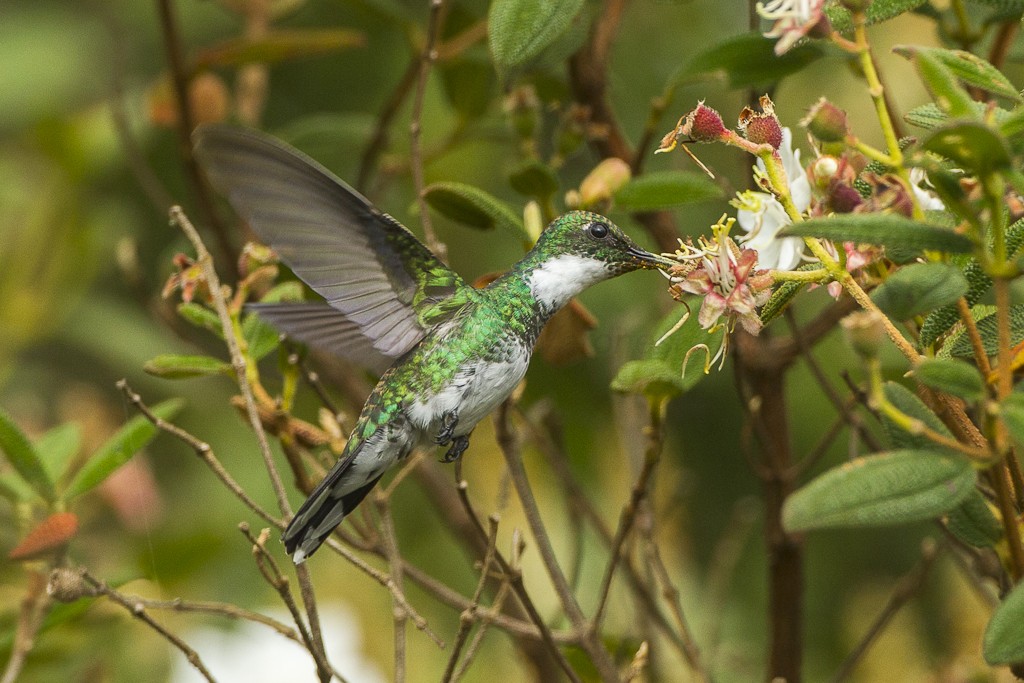White-throated Hummingbird
A species of White-throated Hummingbird Scientific name : Leucochloris albicollis Genus : White-throated Hummingbird
White-throated Hummingbird, A species of White-throated Hummingbird
Botanical name: Leucochloris albicollis
Genus: White-throated Hummingbird
Content
Description General Info
 Photo By Francesco Veronesi , used under CC-BY-SA-2.0 /Cropped and compressed from original
Photo By Francesco Veronesi , used under CC-BY-SA-2.0 /Cropped and compressed from original Description
The white-throated hummingbird (Leucochloris albicollis) is a species of hummingbird in the family Trochilidae. It is the only member of the genus Leucochloris. It is found in north-eastern Argentina, south-eastern Brazil, Paraguay, and Uruguay. It is found in forest, woodland, parks and gardens. It is generally common, and therefore considered to be of least concern by BirdLife International. French ornithologist Louis Jean Pierre Vieillot described the white-throated hummingbird in 1818 as Trochilus albicollis. Its species name is derived from the Latin words albus "white" and collum "neck". Ludwig Reichenbach erected the genus Leucochloris in 1854, deriving the name from the Ancient Greek leukos "white" and chloros "green". A 2014 genetic study found that it lay within the large genus Amazilia, and that it diverged around 5 million years ago from a lineage that gave rise to the green-and-white hummingbird (Amazilia viridicauda), white-bellied hummingbird (A. chionogaster), rufous-throated sapphire (A. sapphirina), gilded sapphire (Hylocharis chrysura), sapphire-spangled emerald (A. lactea), and glittering-throated emerald (A. fimbriata). The white-throated hummingbird is 10–11·5 cm (4-4.5 in) long, with a distinctive white throat, belly and tail tips. The head, upperparts, wing coverts, chin and sides of neck are an iridescent green. The rest of the wings are purple-brown. It is unlikely to be confused with any other bird species. The male weighs 5–8 g (0.17–0.28 oz), while the female weighs around 4·5 g (0.16 oz). The white-throated hummingbird is found in forest margins, marshy areas, shrubland and parks. It forages at both terrestrial and arboreal bromeliads such as Quesnelia testudo and Tillandsia aeranthos, as well as Mendoncia velloziana, and Siphocampylus sulfureus. 
Size
12 cm
Nest Placement
Tree
Feeding Habits
White-throated Hummingbird primarily feeds on nectar, targeting a range of native and introduced flora across various families. It employs hawking to capture insects. Experiments reveal a preference for pure or vitamin-enriched nectar.
Habitat
White-throated Hummingbird typically inhabits forest edges and marshy areas. This species also adapts to open regions with scrub vegetation, as well as human-modified landscapes including parks and gardens. The environmental conditions are diverse, ranging from lowland areas to hilly regions, supporting its varied habitat preferences.
Dite type
Nectivorous
General Info
Feeding Habits
Bird food type
Species Status
Not globally threatened.
Scientific Classification
Phylum
Chordates Class
Birds Order
Swifts and hummingbirds Family
Hummingbirds Species
White-throated Hummingbird